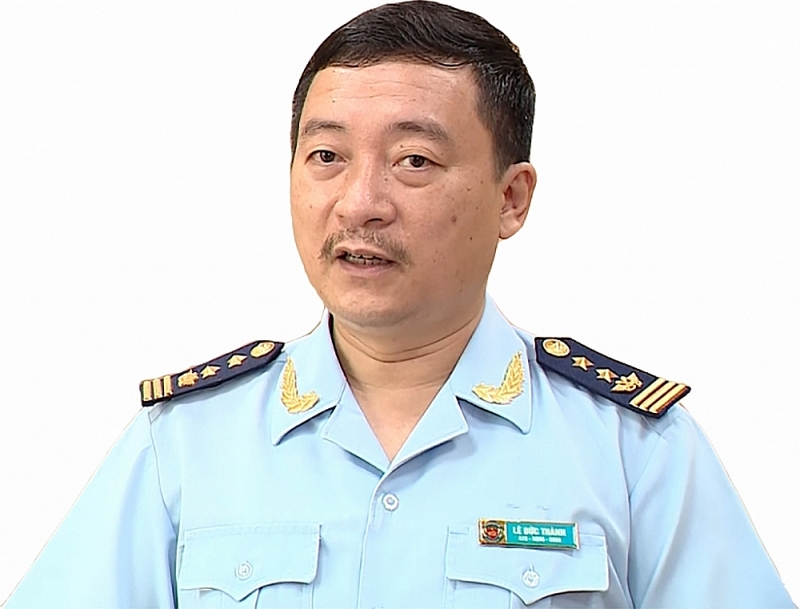
Latest articles
Information technology - the "key" to fulfill the goal of customs reform and modernisation

|
|
|
Director of the of Customs Information Technology and Statistics Department Le Duc Thanh |
In the process of carrying out customs reform and modernisation, especially in the 10 years of implementing the Customs Development Strategy to 2020, Customs sector has gained many achievements, including with information technology (IT). Could you please tell us about the highlights of the IT field?
The Customs authority has made many changes to help people and businesses access information as well as support to create services for people to fulfill their obligations to the State budget, as well as to the trade process, import and export.
IT is one of the fields that contributes a lot to the success of the Customs sector.
Over the past 15 years, the IT field has contributed a premise to facilitate the process of business change.
As a mark of the 2000s, the IT sector had helped Customs authority to apply the concept of risk management for the first time, identify the key point, focus on processing resources, while still creating a channel to facilitate import and export activities.
In 2010, the IT field had a big change. For the first time, the Customs authority launched electronic customs procedures at two customs branches of HCM City Customs Department and Hanoi Customs Department. These were the first steps for the Customs sector to carry out 100% electronic customs procedures. Also in this period, in tandem with implementing electronic customs procedures, the IT field also helped Customs sector to make a great step forward, that was, electronic customs declaration. By the 2010s, electronic customs declarations were about 97%.
Hence, the imprint of 2010-2014 was that the whole Customs sector had completed all the direction on the implementation of five “E” including: e-Declaration (electronic customs declaration); e-Payment (electronic payment), e-C/O (electronic certification of origin of goods), e-Permit (electronic granting license of ministries and sectors), E-Clearance (electronic customs clearance).
By 2014, the Customs authority had moved from electronic customs clearance to a new stronger step, implementing automated customs clearance for the first time. With the automated customs clearance process, if goods were classified in the green channel, businesses would receive the cargo clearance result within three seconds.
From 2014-2020, the automated customs clearance process had been strongly applied in all aspects with all firms, from large enterprises to small and medium enterprises. About 60,000 import-export businesses have been enjoyed the achievement of automated customs clearance.
Besides automated customs clearance, which type of technology solutions has brought many benefits to facilitate the circulation of goods at seaports?
Besides automated customs clearance to increase the circulation time of goods at seaport border gates, the Customs sector has been assigned by the Government to be the focal agency together with ministries and sectors to implement National Single Window and ASEAN Single Window.
The National Single Window, it helped ministries and sectors carry out administrative procedures on licensing such as electronic import and export licenses. It contributed to facilitating the clearance process at the seaport.
In addition, the Customs sector also cooperated with Customs agencies of other countries to implement ASEAN Single Window, allowing the exchange of information on goods declarations and electronic certificates of origin with ASEAN countries
The National Single Window and ASEAN Single Window are gradually being widely deployed, helping people and businesses have consistent access to permits from ministries and sectors which was similar to single window mechanism in administration. Today, the implementation of the National Single Window and ASEAN Single Window is being widely deployed.
In the next phase, Customs sector will enter a new development phase with the main task of developing a Customs Development Strategy for 2021-2030, in that context, how IT will be developed?
In the plan for 2021-2025 as well as a vision to 2030, the Customs sector was implementing directions from the resolutions of the Government as well as the Government on the implementation of digital transformation. Digital transformation was a higher step of implementing electronic customs procedures, allowing all customs procedures, administrative procedures of the Customs authorities, as well as other related procedures to perform in the digital environment. People will have minimised access and direct contact with customs officers. They would send documents and receive results in the digital environment.
Customs authorities would have more information through digital transformation, making more accurate assessments of risk classification, concentrating resources to handle high risks, while still facilitate to low-risk channel, helping to facilitate the movement of goods at border gates.
Thank you!
Most Recent Bài viết
| Title | Category | Created On |
|---|---|---|
| Loosening the belt buckle for sustainable development of the maritime industry | General | 2024-04-22 15:42:33 |
| Seaport enterprises "join hands" to expand logistics supply chain | General | 2024-04-22 15:35:34 |
| Vietnamese products innovate to conquer the global market | General | 2024-04-21 15:48:18 |
| Businesses capitalize on recovery momentum to explore market expansion | General | 2024-04-21 15:38:06 |
| Access to the Chinese market is increasingly convenient | General | 2024-04-21 15:11:11 |
Search All Bài viết
|
A Quick Intro |
Search Trade Information
|
|
|
|
|
|
|
|
|
|
|
|
|
|
Feature Information
|
|
|
|
|
|
|
|
|
|
|
Information & Articles
|
|
|
|
|
|
|
|
|
|
|
|
Contact Us! If you cannot find what you require in this website please feel free to contact us. Click here to send us a message >>>
|
